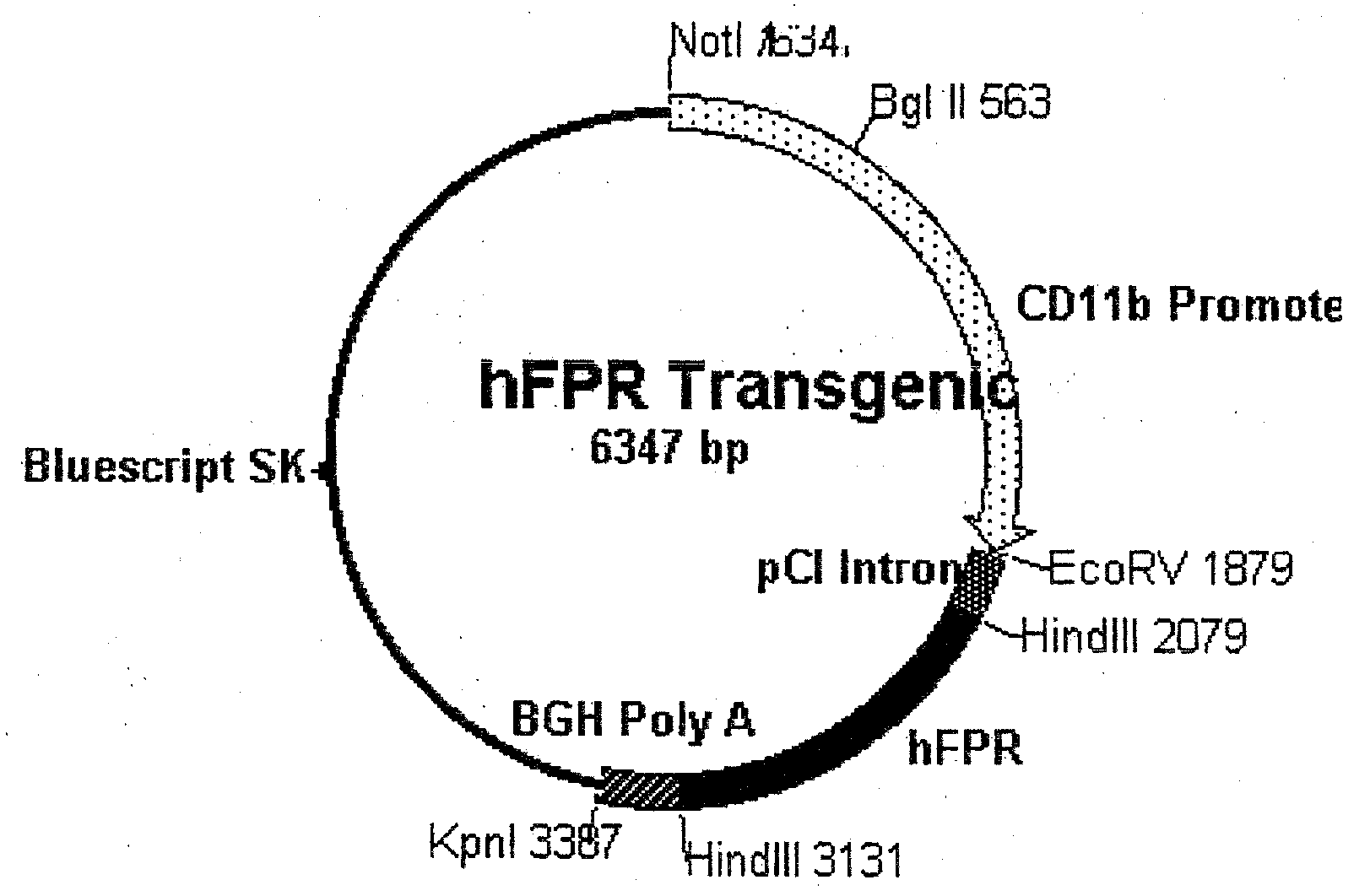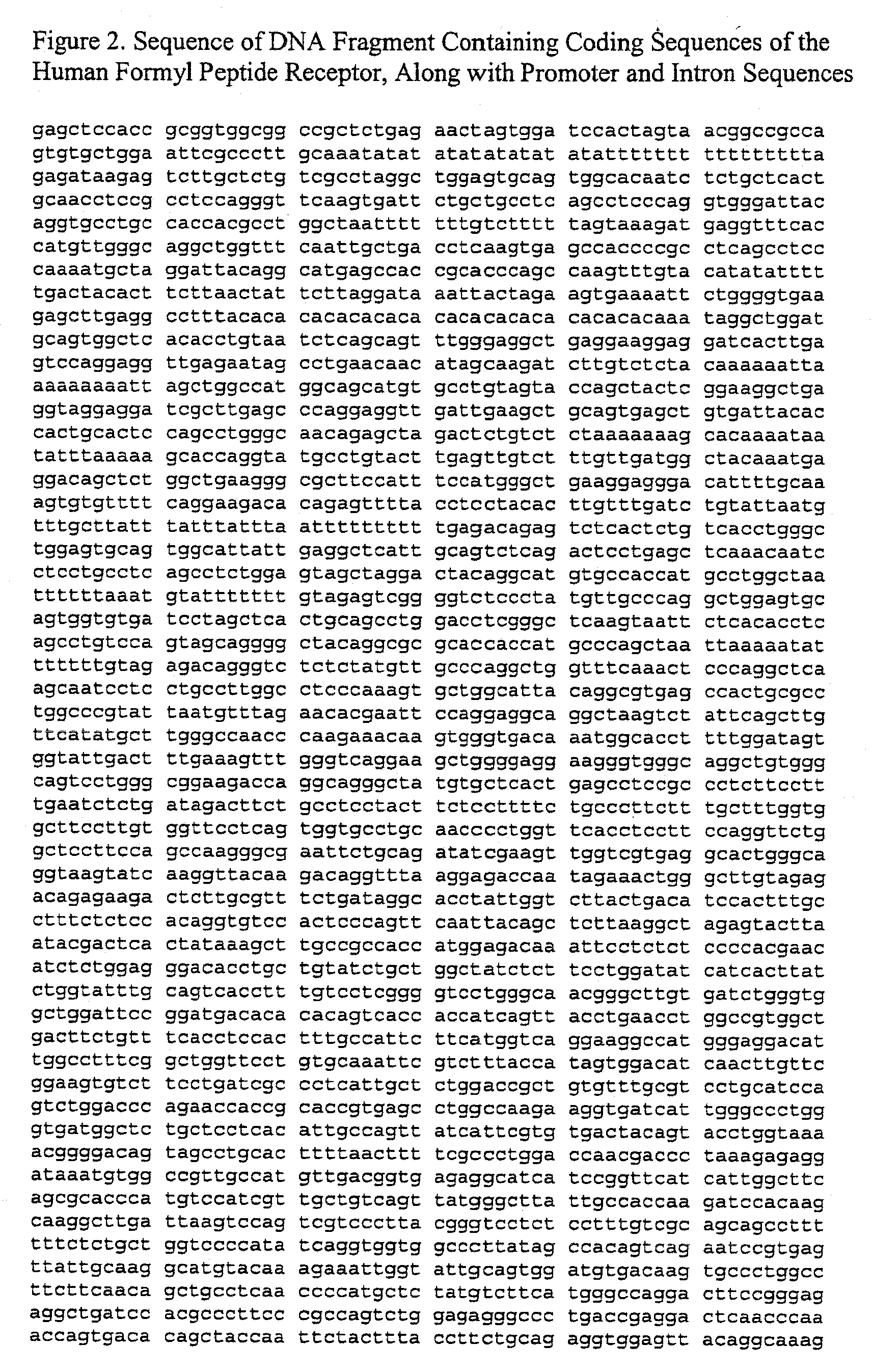Transgenic mice expressing human formyl peptide receptor
a technology of human formyl peptide and transgenic mice, which is applied in the direction of peptides, artificial cell constructs, drug compositions, etc., can solve the problems of fpr / mice showing increased mortality, mice have not been tested directly, and excess tissue damage, so as to slow or prevent the phenotypic conversion, reduce the local h2o2 production, and reduce the effect of local h2o2 production
- Summary
- Abstract
- Description
- Claims
- Application Information
AI Technical Summary
Benefits of technology
Problems solved by technology
Method used
Image
Examples
Embodiment Construction
[0051]One aspect of this invention describes mice that ectopically express the human formyl peptide receptor (hFPR), with preference for mice in which expression is focused within tissue or cell types generally consistent with its function in immunity. Specifically, in which expression occurs within and is generally restricted to neutrophils and macrophages. In one specific embodiment, as shown in FIG. 1, hFPR expression is sponsored by the CD11b promoter, which is known to be active according to such a profile. Although the mouse promoter is shown in this example, other appropriate promoters are contemplated, including analogous transcriptional control regions of humans other mammals, as well as formyl peptide promoters themselves. In the plasmid construct used to generate the transgenic mouse in this example, an intron is included within the actively transcribed region of the plasmid to support stable expression and efficient processing of the resulting transcript. Similarly, the ...
PUM
| Property | Measurement | Unit |
|---|---|---|
| Electrical conductance | aaaaa | aaaaa |
| Stress optical coefficient | aaaaa | aaaaa |
Abstract
Description
Claims
Application Information
 Login to View More
Login to View More - R&D
- Intellectual Property
- Life Sciences
- Materials
- Tech Scout
- Unparalleled Data Quality
- Higher Quality Content
- 60% Fewer Hallucinations
Browse by: Latest US Patents, China's latest patents, Technical Efficacy Thesaurus, Application Domain, Technology Topic, Popular Technical Reports.
© 2025 PatSnap. All rights reserved.Legal|Privacy policy|Modern Slavery Act Transparency Statement|Sitemap|About US| Contact US: help@patsnap.com



